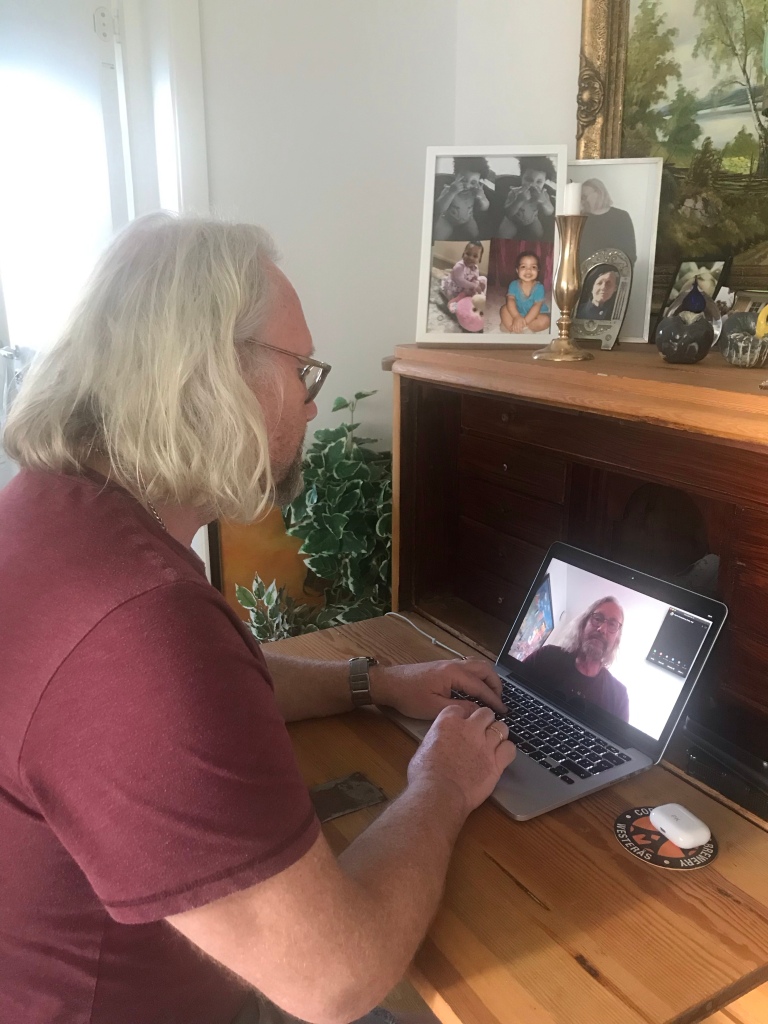 Facilitating an online seminar from the home office
Facilitating an online seminar from the home office
As you know, there is a lot of learning through collaboration among students, however, collaboration can be a challenge in online courses. The question about how to get my students to join and engage in online seminars is something that I have been pondering over for some time.
When I first started to give online courses in Environmental Engineering, I and my colleagues wanted our students to engage with each other and us, the teachers, in an online environment. Our first approach was to schedule online meetings. We instructed the students to connect at given times to discuss some relevant topics with us. The results were disappointing to say the least. Very few students connected, and even fewer contributed to the discussion. We were surprised and confused. How come that the students didn’t join the online seminars?
The poor outcome sent us back to the drawing board. After some thinking we decided to make online seminars part of the examination, and therefore compulsory to attend.
Compulsory online seminars resulted in much better attendance. However, it also complicated matters. What do you do with students that can’t attend a compulsory seminar? Students not being able to attend is common in online courses as many of the students are working, having difficulty in attending meetings during the daytime. What to do? Arrange seminars for the ones that couldn’t attend, or develop alternative tasks? We decided on the latter. We now ask students that miss a seminar to record and upload a video presenting his/her results. So, compulsory online seminars were an improvement, but not an optimal situation.
We went back to the drawing board reflecting over the purpose of the online seminars, asking: What would make students engage in an online seminar? We concluded that it most likely doesn’t have to be a compulsory activity. What is important is that the online seminar is rewarding and engaging the student.
We decided to make the online seminars non-compulsory and instead package them as excellent opportunities for each student to share and discuss his/her findings.
This resulted in the following approach, using Zoom as the platform for online seminars:
- Give an introductory online seminar introducing the assignment, where questions can be asked clarifying the tasks and what is expected.
- At that seminar it is announced that after submission of the report a webinar will be held, where each student will be allowed to present and discuss his/her results.
- Develop an assignment for the online seminar that the students see in their todo-list on the learning platform, e.g. Canvas. In the assignment, you give instructions about how to connect as well as an agenda with a schedule for each agenda item, and instructions for how to prepare for the webinar.
- Inform the students that you will start the online meeting 30 minutes before the scheduled starting time. This allows everyone to test their camera and microphone, and ask questions.
- Start the meeting on time!
- Spend at least 5 minutes welcoming everyone and introducing the agenda. This allows latecomers to join the meeting before the group is split into breakout rooms.
- Divide the group into smaller groups using breakout rooms. Each student presents his/her results and conclusion, and a summary of the group’s findings is compiled.
- Gather all participants in the big meeting and let each group share their joint reflections.
- Facilitate this session and make sure all groups are allowed to share and discuss their findings.
- Stick to the time given in the agenda.
This approach seems to be working very well. Students are well prepared and engage in discussions in breakout rooms and the plenary discussions.
So, the take-home message is:
- Make sure that the students have clear instructions about what is expected from them during the online seminar.
- Ensure that everyone has done some work before the online seminar that forms the basis for discussions in the smaller groups, and contributes to the summarising discussion at the end.
- Give everyone a chance to share their results and contribute to the discussions.
If you have any questions or would like to discuss this approach, feel free to contact me at any time.